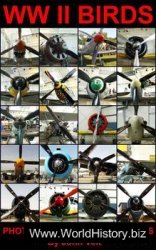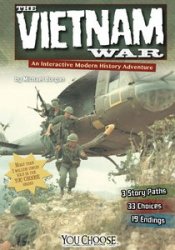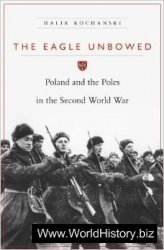Thus, the evidence from the most thoroughly excavated centers in the Lower Pasion region indicates that the Terminal Classic period was one of reduction of population, but without evidence of radical environmental change, economic transformation, or foreign invasions. Instead, Terminal Classic enclaves at Punta de Chimino, Seibal, and Altar were reduced and concentrated remnants of Late Classic Maya kingdoms. Only in these few locations did major public architecture continue. Elsewhere, depopulation was dramatic.
At Punta de Chimino, a massive ballcourt, large plastered palace platforms, and a corbelled vaulted masonry shrine (Morgan 1995) were erected during Terminal Classic times (Figure 6.5). The ballcourt, the largest in the Petexbatun, was

6.5 Punta de Chimino Terminal Classic ballcourt and epicenter. Courtesy of Vanderbilt University Press.
Similar in dimensions and architectural form to the Terminal Classic C-9 ballcourt at Seibal (Smith 1982: 157-162). Terminal Classic elite residences at Punta de Chimino (Quezada 1996; Morgan 1996) had broad platforms (10 X 20 meters) covered thickly in plaster, an unusual display of wealth for the Petexbatun. A large ‘Tlaza Plan 2” compound with a fine masonry corbelled vaulted roof indicated the elite status of some Terminal Classic residents. A cache with Altar Fine Orange and Plumbate confirmed the Terminal Classic date of the shrine, and its distinctive carved cornices were similar to those on Bayal phase structures at Seibal (e. g. Tourtellot 1988b: 79; Morgan 1996: 72). Unmistakable Tepeu 3 diagnostics in the ballcourt and residences, including Fine Orange and tripod interior incised “grater bowls,” dated these remarkable constructions (Morgan 1995,1996; Castellanos 1996). The florescence at Punta de Chimino was surprising in light of the Terminal Classic landscape elsewhere in the Petexbatun, which consisted of tiny hamlets and scattered homesteads amid the ruins of the Classic-period centers. Punta de Chimino’s island fortress, the last ceremonial center and elite occupation in the Petexbatun, remained a refuge in the Terminal Classic behind its massive moats, sustained by its protected zones of intensive agriculture (Demarest, Escobedo, and O’Mansky 1996).
Of course, even more impressive were the temples, Cycle 10 monuments, and ballcourts of Seibal and Altar de Sacrificios to the north on the Pasion River itself. This elite monumental propaganda was successful in its original intent: to impress and awe with ancient Maya elite imagery mixed with new, exotic foreign elements. Yet I suspect that this display has been even more successful with modem archaeologists. It has inspired three decades of speculation on the Cycle 10 florescence in the Pasion, which has been envisioned as being led by Mexican warriors, Putun warrior/merchant-elites, or a more mercantile, “new” order of society.
The problem in interpretation comes, obviously, from relying too heavily on various aspects of elite imagery and monumental art and architecture. Tourtellot’s original studies of residential settlement, which are too often ignored, had argued for a probable Terminal Classic population decline (Tourtellot 1988b: 402). While the difficulty of estimating Tepeu 3 population sizes is considerable (see Tourtellot 1988b: 367-372; Chase and Chase, Chapter 2, this volume), the Terminal Classic markers in the Pasion region are fairly widespread and include non-elite as well as fine ware ceramics (Foias 1996). Tourtellot also had observed that the new imagery and Cycle 10 monuments of Seibal are striking, but the total volume of earlier full Classic-period architecture was much greater (1988b: 402). The pattern at Seibal may, then, be the same as that at Punta de Chimino, but on a larger scale: reduction of population into defensible locations and an attempt at public revitalization by the new elite.
Reassessment of the Seibal settlement and architectural data (Tourtellot and Gonzalez, Chapter 4, this volume), like the Petexbatun settlement patterns and fortifications (O’Mansky and Dunning, Chapter 5, this volume), show the eighth century to have been a period of intensified warfare across the entire Pasion region. Evidence of possible defenses and a siege village can now be identified at Seibal (see Tourtellot and Gonzalez, Chapter 4, this volume). The subsequent Pasion-center Terminal Classic architectural constructions, shrines, ballcourts, and monuments might be interpreted as part of a program by the region’s elites to politically maintain the diverse remnant population that had concentrated at these fortified enclaves.
The eclectic nature of Seibal iconography, ceramic styles, and inscriptions could reflect such an effort by its elite at revitalization in the postapocalyptic landscape of the Pasion region. The “Facies A” and “Facies B” styles at Seibal are now recognized to be fundamentally Classic Maya, rather than “foreign,” “Putun,” or Mexican as once believed (Graham 1973, 1990; cf. Stuart 1993; Scheie and Mathews 1998: 179-184). Nonetheless, the Terminal Classic elite stressed their distant affiliations, including ties to Ucanal far to the east (Scheie and Mathews 1998:183) and to distant Chichen Itza (Kowalski 1989). The unusual headdresses, costumes, and sculptural style of Graham’s “Facies B” monuments at Seibal, new architectural elements, and foreign associations in “Facies A” inscriptions all may reflect a conscious program of ideological legitimation. Bayal-phase leaders were invoking prestigious and traditional Classic Maya associations, but also new pan-Maya affiliations.
Ringle et al. (1998) have suggested that many of these new stylistic elements may be part of a Quetzalcoatl cult that spread through the Maya world in Terminal Classic times. Similarly, A. Chase and Chase (1985) identified some possible Terminal Classic pan-Maya iconographic elements, indicating political associations of remaining elites. Both interpretations would be compatible with the hypothesis that leaders of Seibal, Altar, and Punta de Chimino were consciously legitimating their remnant kingdoms by combining Classic Maya political ideology with new associations and symbols. The prevalence of fine paste wares with new vessel forms and modeled carved imagery may also have been part of this attempt at elite redefinition.
These efforts of revitalization now must be viewed in the light of the more extensive settlement and historical data from the Petexbatun. These centers may have represented a last gasp of Classic Maya K’ul Ajaw political ideology after a period of endemic warfare, political devolution, depopulation, and probable massive emigration. These efforts to maintain power failed within a century, leading to the dwindling of populations at Seibal, Altar, and Punta de Chimino. Indeed, the failure of Terminal Classic political formations in the region was also reflected in the unusual paucity of Postclassic population in the Pasion and Petexbatun. At Seibal, the Petexbatun centers, and nearby scattered intersite areas. Postclassic occupation is limited to a few scattered households, with little or no public architecture. Pollen core data indicate another area of possible Postclassic occupation to the south of the Petexbatun at Laguna Las Pozas (Johnston et al. 2001), but again no public architecture has been found. A small center to the north of the Petexbatun (near Sayaxche) may have included some minor public structures with some Postclassic use. The hieroglyphic stairway at Punta de Chimino itself was buried by one of the larger Postclassic occupations: a sheet midden of fishermen’s net weights, fish bones, and Postclassic ceramics (Morgan and Demarest 1995). These ceramics show no continuity with earlier Petexbatun forms, but represent a later small reoccupation by central Peten groups (Morgan and Demarest 1995; Foias 1996, 2004).




 World History
World History









